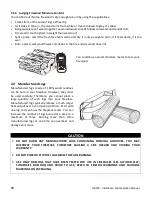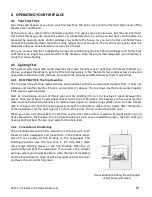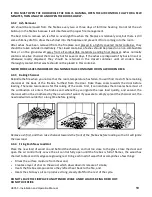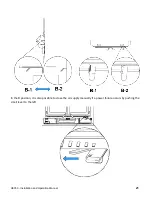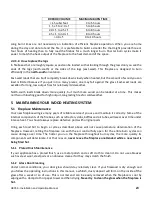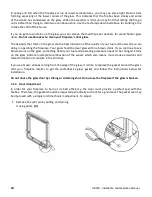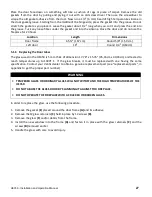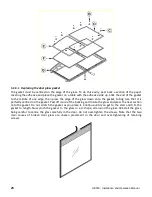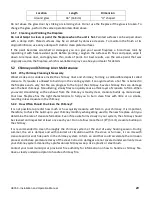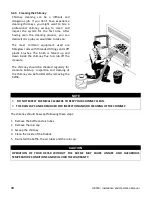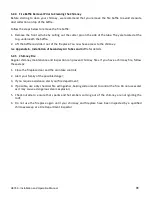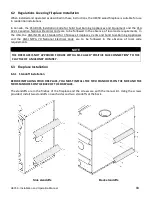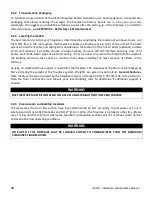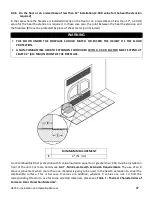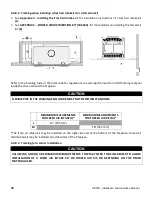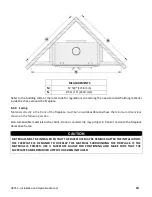
HE350 - Installation and Operation Manual
29
Location
Length
Dimension
Around glass
66" (168 cm)
“U” shaped
Do not abuse the glass door by striking or slamming shut. Do not use the fireplace if the glass is broken. To
change the glass, perform the same operation described above.
5.1.7
Cleaning and Painting the Fireplace
Do not attempt to clean or paint the fireplace when the unit is hot.
Painted surfaces can be wiped down
with a damp cloth. Plated surfaces may be scratched by abrasive cleaners. To maintain the finish at its
original brilliance, use only a damp soft cloth to clean plated surfaces.
If the paint becomes scratched or damaged, you can give your wood fireplace a brand new look by
repainting it with heat-resistant paint. Before painting, roughen the surface with fine sand paper, wipe it
down to remove dust, and apply two thin coats of paint. For best results, use the same paint that was
originally used on the fireplace, which is available in spray cans. See your dealer for details.
5.2
Chimney and Chimney Liner Maintenance
5.2.1
Why Chimney Cleaning is Necessary
Wood smoke can condense inside the chimney liner and chimney, forming a combustible deposit called
creosote. If creosote is allowed to build up in the venting system it can ignite when a hot fire is burned in
the fireplace and a very hot fire can progress to the top of the chimney. Severe chimney fires can damage
even the best chimneys. Smouldering, smoky fires can quickly cause a thick layer of creosote to form. When
you avoid smouldering so the exhaust from the chimney is mostly clear, creosote builds up more slowly.
Your new fireplace has the right characteristics to help you to burn clean fires with little or no smoke,
resulting in less creosote in the chimney.
5.2.2
How Often Should You Clean the Chimney?
It is not possible to predict how much or how quickly creosote will form in your chimney. It is important,
therefore, to check the build-up in your chimney monthly when getting used to the new fireplace until you
determine the rate of creosote formation. Even if creosote forms slowly in your system, the chimney should
be cleaned and inspected at least once each year. Do not allow more than 1/8
″
(3 mm) creosote buildup in
the chimney.
It is recommended to clean thoroughly the chimney system at the end of every heating season. During
summer, the air is damper and with minimal air circulation within the stove or furnace, it can mix with
creosote and/or sooth deposits in the chimney system to form an acid that could accelerate the corrosion
process and induce premature decay of the steel. Corrosion damages are not covered under warranty. Have
your chimney system cleaned by a professional chimney sweep. Use a plastic or steel brush.
Contact your local municipal or provincial fire authority for information on how to handle a chimney fire.
Have a clearly understood plan to handle a chimney fire.


